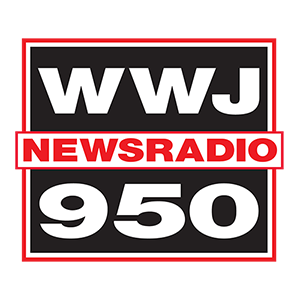Radio programming is the process of organising a schedule of radio content for commercial broadcasting and public broadcasting by radio stations.
KDKA-TV is a television station in Pittsburgh, Pennsylvania, United States, serving as the market's CBS outlet. It is owned and operated by the network's CBS News and Stations division alongside Jeannette-licensed CW affiliate WPCW. Both stations share studios at the Gateway Center in downtown Pittsburgh, while KDKA-TV's transmitter is located in the city's Perry North neighborhood. KDKA-TV, along with sister station KYW-TV in Philadelphia, are the only CBS-affiliated stations east of the Mississippi River with "K" call signs.
Radio broadcasting has been used in the United States since the early 1920s to distribute news and entertainment to a national audience. In 1923, 1 percent of U.S. households owned at least one radio receiver, while a majority did by 1931 and 75 percent did by 1937. It was the first electronic "mass medium" technology, and its introduction, along with the subsequent development of sound films, ended the print monopoly of mass media. During the Golden Age of Radio it had a major cultural and financial impact on the country. However, the rise of television broadcasting in the 1950s relegated radio to a secondary status, as much of its programming and audience shifted to the new "sight joined with sound" service.

News broadcasting is the medium of broadcasting various news events and other information via television, radio, or the internet in the field of broadcast journalism. The content is usually either produced locally in a radio studio or television studio newsroom, or by a broadcast network. It may include material such as sports coverage, weather forecasts, traffic reports, political commentary, expert opinions, editorial content, and other material that the broadcaster feels is relevant to their audience. An individual news program is typically reported in a series of individual stories that are presented by one or more anchors. A frequent inclusion is live or recorded interviews by field reporters.

WWJ is a commercial AM radio station licensed to serve Detroit, Michigan, featuring an all-news format known as "Newsradio 950 WWJ". Owned by Audacy, Inc., the station services Metro Detroit, is the market affiliate for CBS News Radio, and the flagship station for the Michigan Sports Network. Operating on a regional broadcast frequency, its studios are in the Panasonic Building in Southfield, and its transmitter site is near Newport. WWJ is licensed by the Federal Communications Commission to broadcast in the HD Radio format, and is simulcast on an HD subchannel of sister station WXYT-FM.

Broadcast journalism is the field of news and journals which are broadcast by electronic methods instead of the older methods, such as printed newspapers and posters. It works on radio, television and the World Wide Web. Such media disperse pictures, visual text and sounds.

WGTU and WGTQ are television stations in Traverse City and Sault Ste. Marie, Michigan, United States, serving as the ABC affiliate for the northern Lower and eastern Upper peninsulas of Michigan. WGTU and WGTQ are owned by Cunningham Broadcasting; Cunningham contracts with Sinclair Broadcast Group, owner of regional NBC affiliates WPBN-TV and WTOM-TV, to provide services and advertising sales functions. Both stations share studios on M-72 just west of Traverse City; WGTU's transmitter is located east of Kalkaska, Michigan, and WGTQ's is located near Goetzville in southeastern Chippewa County, in addition to simulcasts on WPBN-TV and WTOM-TV's transmitters. The two stations, known as "ABC 29&8" and together with WPBN/WTOM as "UpNorthLive", carry the same programming and together serve one of the largest television markets east of the Mississippi River.
KQV is a non-commercial radio station in Pittsburgh, Pennsylvania, and covering the Greater Pittsburgh Region. Owned by Broadcast Educational Communications, the station simulcasts FM 88.1 WKGO in Murrysville and airs an easy listening radio format. KQV is one of the oldest radio stations in North America.

KDKA-FM is a commercial FM radio station licensed to serve Pittsburgh, Pennsylvania. The station is owned by Audacy, Inc. through licensee Audacy License, LLC and broadcasts a sports radio format. Studios are located at Foster Plaza near Green Tree while the broadcast tower used by the station is located near Mount Washington, next to its former studios in Pittsburgh's South Shore neighborhood at.
PM/Evening Magazine is a television series with a news and entertainment format. It was syndicated to stations throughout the United States. In most areas, Evening/PM Magazine was broadcast from the late 1970s into the late 1980s.
In the United States, commercial radio stations make most of their revenue by selling airtime to be used for running radio advertisements. These advertisements are the result of a business or a service providing a valuable consideration, usually money, in exchange for the station airing their commercial or mentioning them on air. The most common advertisements are "spot commercials", which normally last for no more than one minute, and longer programs, commonly running up to one hour, known as "informercials".

The BBC National Programme was a radio service which was on the air from 9 March 1930 – replacing the earlier BBC's experimental station 5XX – until 1 September 1939 when it was subsumed into the Home Service, two days before the outbreak of World War II.

KDKA is a Class A, clear channel, AM radio station, owned and operated by Audacy, Inc. and licensed to Pittsburgh, Pennsylvania, United States. Its radio studios are located at the combined Audacy Pittsburgh facility in the Foster Plaza on Holiday Drive in Green Tree, and its transmitter site is at Allison Park. The station's programming is also carried over 93.7 KDKA-FM's HD2 digital subchannel, and is simulcast on FM translator W261AX at 100.1 MHz.

The mass media in Ethiopia consist of radio, television and the Internet, which remain under the control of the Ethiopian government, as well as private newspapers and magazines. Ten radio broadcast stations, eight AM and two shortwave, are licensed to operate in Ethiopia. The major radio broadcasting stations include Radio Fana a private station, Radio Voice of One Free Ethiopia, and the Voice of the Revolution of Tigray. The only terrestrial (broadcast) television networks are government owned and include EBC and other regional stations. In keeping with government policy, radio broadcasts occur in a variety of languages including Amharic, Afaan Oromo, Tigrigna, and more. There are also many video sharing websites which are a popular way of getting information as well as entertainment in Ethiopia.

The National Broadcasting Company's NBC Radio Network was an American commercial radio network which was in continuous operation from 1926 through 1999. Along with the NBC Blue Network, it was one of the first two nationwide networks established in the United States. Its major competitors were the Columbia Broadcasting System (CBS), founded in 1927, and the Mutual Broadcasting System, founded in 1934. In 1942, NBC was required to divest one of its national networks, so it sold NBC Blue, which was soon renamed the American Broadcasting Company (ABC). After this separation, the Red Network continued as the NBC Radio Network.

Radio Luxembourg was a multilingual commercial broadcaster in Luxembourg. It is known in most non-English languages as RTL.
Major League Baseball on the radio has been a tradition for over 100 years, and still exists today. Baseball was one of the first sports to be broadcast in the United States. Every team in Major League Baseball has a flagship station, and baseball is also broadcast on national radio.

WGI was an early radio broadcasting station, licensed to the American Radio and Research Corporation (AMRAD) of Medford Hillside, Massachusetts. WGI received its initial broadcasting license on February 7, 1922. However, the station had previously made regular broadcasts under an experimental license as 1XE, which were the first organized broadcasts in the Boston area.
The Press-Radio War in the United States lasted from 1933 to 1935. Newspaper publishers were concerned to maintain their own dominance of the news market in the face of the emerging radio networks. The Press induced the wire services to stop providing news bulletins to radio broadcasters, which then developed their own news-gathering facilities. In response the press launched political, economic and legal campaigns to prevent news being broadcast on radio, culminating in The Biltmore Agreement by which major networks were compelled to heavily restrict radio news coverage. However, broadcasters soon developed ways to subvert the terms of this agreement, including the use of newly established news agencies such as the Transradio Press Service.
Lorain Journal Co. v. United States, 342 U.S. 143 (1951), is a decision of the United States Supreme Court that is often cited as an example of a monopolization violation being based on unilateral denial of access to an essential facility although it in fact involved concerted action. When the Lorain Journal monopoly over advertising in the Lorain, Ohio, area was threatened by the establishment of a competing radio station, the newspaper's publisher refused to accept advertising from those who advertised over the radio station and required them to advertise only in the Journal. The purpose of the publisher was to eliminate the competition of the radio station. The Supreme Court held that the publisher had attempted to monopolize trade and commerce in violation of § 2 of the Sherman Antitrust Act and was properly enjoined from continuing its conduct.
McChesney, Robert W. Telecommunications, Mass Media, and Democracy. New York: Oxford University Press, 1993. Google Books. Web. 24 Apr. 2011.
Perry, Stephen D. A Consolidated History of Media. Bloomington: Epistelogic Publishing, 2004. Print.










